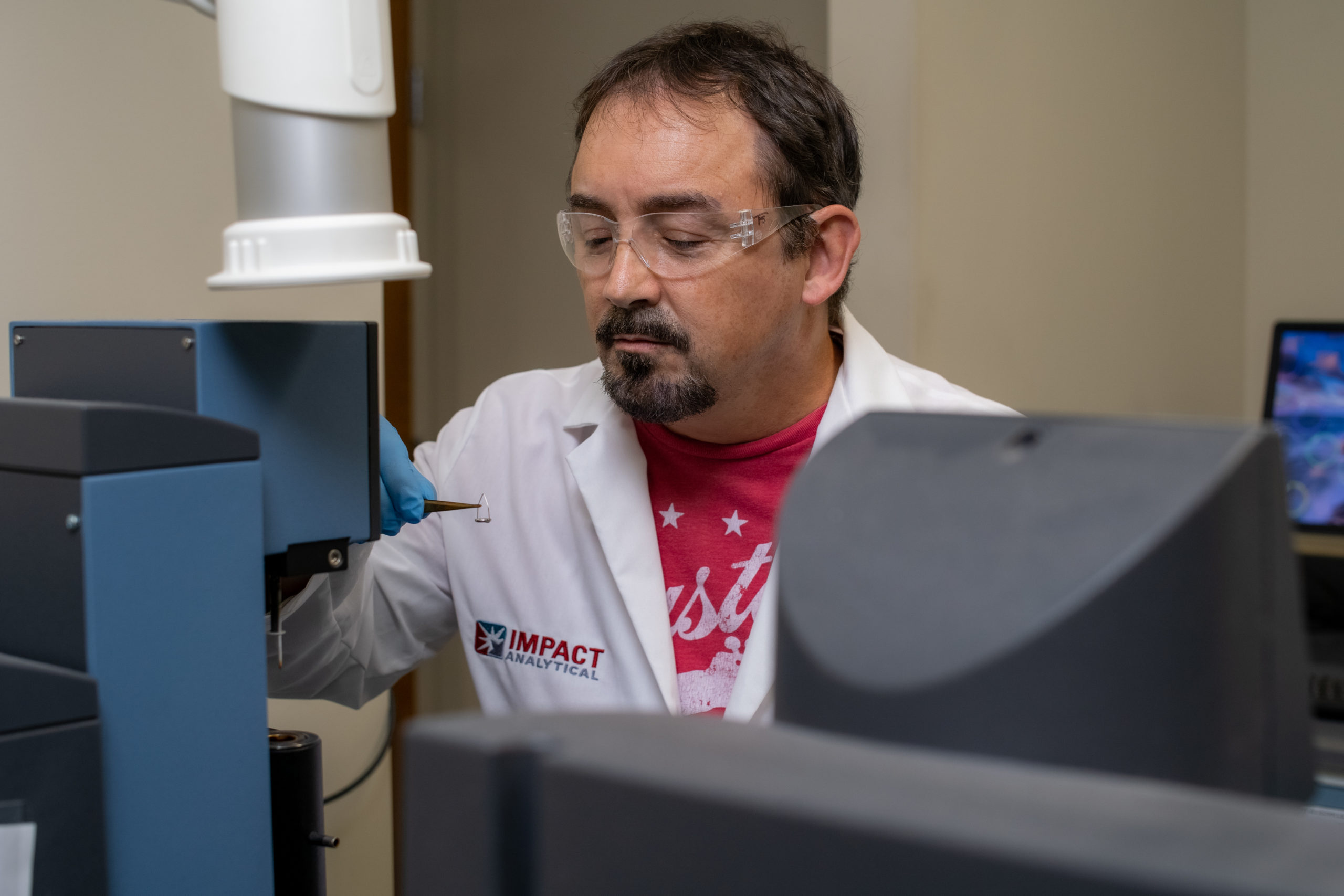-Services-
Viscosity Testing
Viscosity is often referred to as the thickness of a fluid, where water has a low viscosity and honey has a high viscosity. There are two methods for determination of the viscosity of a material, kinematic and dynamic, and both can be determined under controlled temperature. The kinematic method uses gravity to force the sample through a glass viscometer (such as Ubbelohde) containing a capillary of known dimensions. This technique is good for Newtonian fluids and can be used to determine the intrinsic or inherent viscosity of a material.
The dynamic method used a specific geometry and a motor to apply a force on the test sample. A Brookfield viscometer with a spindle and small sample adapter is an example of the equipment that can be used to determine the dynamic viscosity of materials. Impact Analytical can offer both techniques using such rotational methods as described in ASTM D2983, D4016 or D1824, or capillary methods such as ASTM D445.

Related Services
Related Testing Techniques
Ready to Get Started?
Give us a call and speak with an actual scientist.

